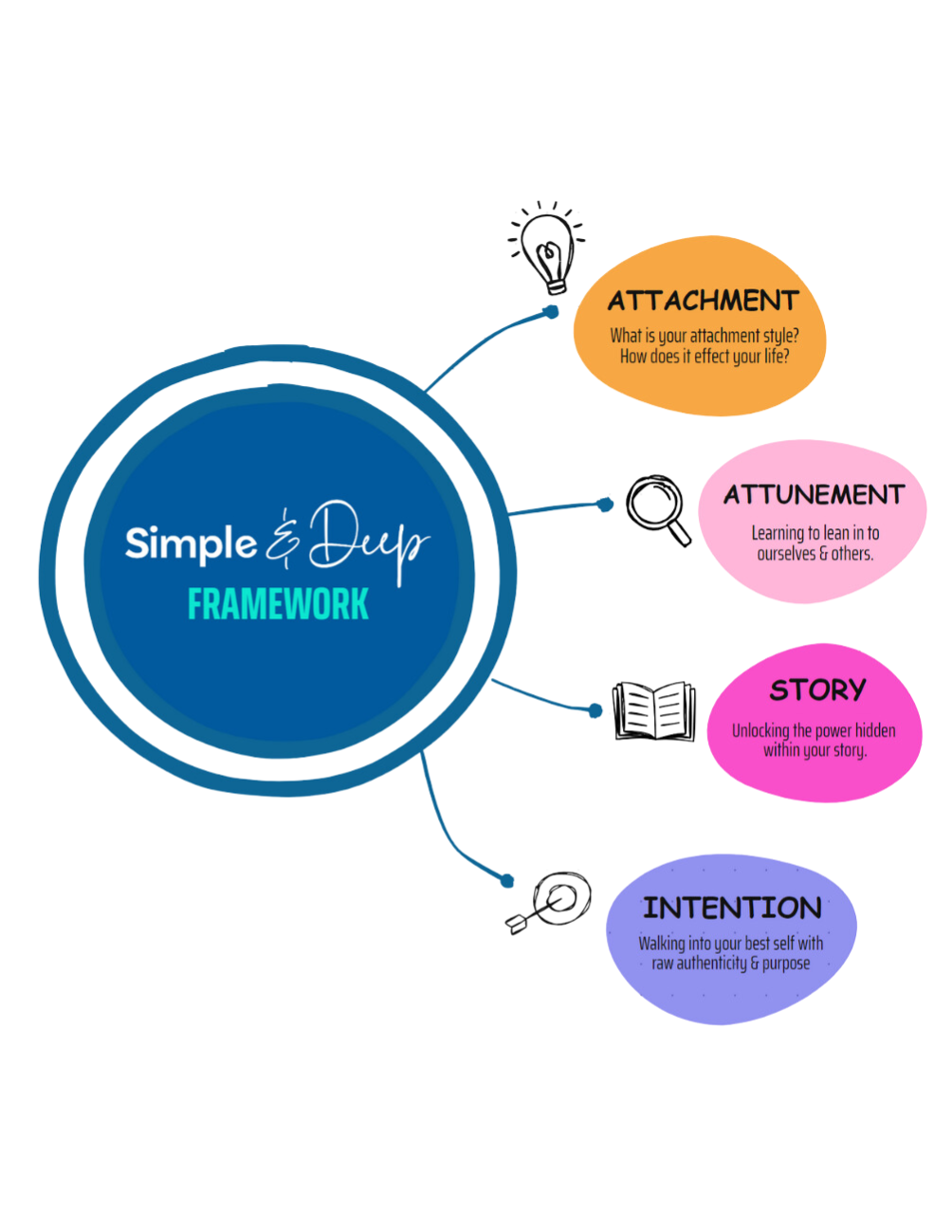Understanding Avoidant Attachment: Characteristics and Healing Tips | Simple & Deep™ Coaching
Nov 01, 2024
Are you someone who constantly pushes people away? Do feelings of intimacy and closeness make you feel overwhelmed and suffocated? If so, you may have an avoidant attachment style.
Avoidant attachment is a common type of insecure attachment that develops in childhood due to inconsistent or unavailable caregiving. It is characterized by a fear of intimacy, dependence on others, and a tendency to avoid emotional connection. People with avoidant attachment often struggle with forming deep and meaningful relationships, which can lead to feelings of loneliness and isolation.
But the good news is that avoidant attachment can be overcome with the right tools and support. At Simple & Deep™ Coaching, we specialize in helping women heal from past traumas and develop secure attachment styles. Our Four-Pillar Framework combines practical strategies and deep emotional work to create lasting change.

Here are some characteristics of avoidant attachment and tips for healing:
Characteristics of Avoidant Attachment
- Fear of Intimacy: People with avoidant attachment strongly fear getting too close to others emotionally. They may struggle with sharing their thoughts and feelings, leading to surface-level relationships.
- Emotional Detachment: Due to their fear of intimacy, individuals with avoidant attachment may suppress their emotions and appear emotionally distant. This can make it challenging for them to express love and form deep connections.
- Avoiding Dependence: People with avoidant attachment often pride themselves on being self-sufficient and independent. They may see depending on others as a weakness or vulnerability, leading to avoiding relationships altogether.
- .Showing vulnerability requires trust and emotional openness, which is difficult for those with avoidant attachment. It can feel overwhelming and uncomfortable, causing them to retreat even further.
Healing Tips
- Acknowledge Your Attachment Style: The first step in healing from avoidant attachment is recognizing and acknowledging your attachment style. This self-awareness can help you understand why you struggle with intimacy and how to begin the healing process. Discomfort with Vulnerability: Showing vulnerability requires trust and emotional openness, which is difficult for those with avoidant attachment.
- Identify Triggering Patterns: Reflect on your past relationships and identify any patterns that may have contributed to your avoidant attachment. This could include feelings of abandonment, rejection, or neglect from childhood experiences.
- Practice Emotional Regulation: Learning to regulate emotions is crucial for overcoming avoidant attachment. Practice identifying and expressing your emotions healthily rather than avoiding them altogether.
- Engage in Vulnerability Exercises: Work with a coach or therapist to practice vulnerability exercises, such as sharing your thoughts and feelings with someone you trust. This can help you become more comfortable with emotional intimacy. Apply today to discover if you're a perfect match for Simple & Deep™ Coaching.
Do you want to be a better human being, parent, lover, and friend and tend to the wounds that keep festering inside you?
Overcoming avoidant attachment is tough, but guess what? It is possible!
We're here to guide you through the healing process and provide the tools to develop secure attachment.
No more excuses!
We'll lead the way.
It's time to choose YOU.
You are the person you've been waiting for.
Don't let expensive therapies hold you back. Start your journey toward meaningful connections today with Simple & Deep™ Coaching and find the freedom your soul is aching for.

